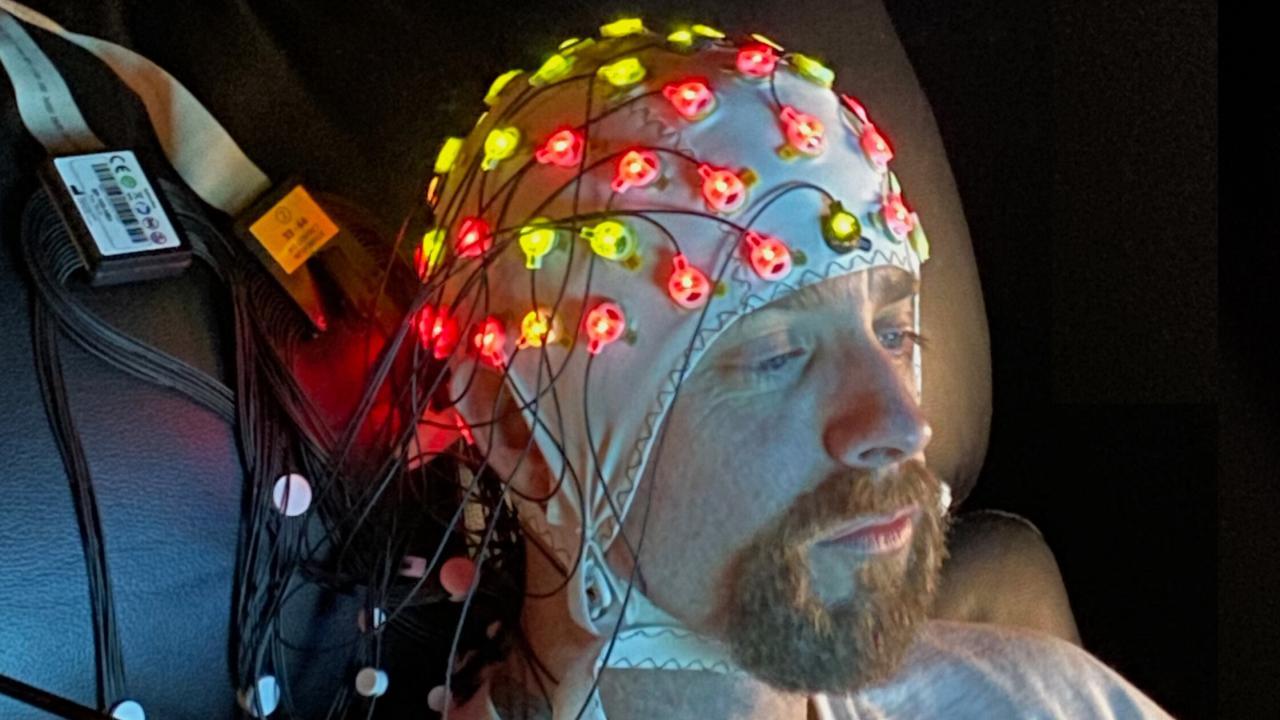
Picture this scenario: You and a friend are walking around your neighborhood when you stop at a crosswalk. As you wait, the noises of the world and your internal thoughts all vie for your attention. Pedestrians chatter as cars rumble by when suddenly, you see a motorist nearly hit a bicyclist.
“Whoa, did you see that?” you say to your friend.
“I sure did; that was a fully restored 1967 Ford Mustang,” your friend replies, referring to a car separate from the near-traffic collision you almost witnessed.
Despite being in the same place at the same time, and looking at the same scene, you and your friend paid attention to different things.
Why? And how?
One possibility is that different things in the environment attracted your attention differently. But another possibility is that you and your friend made voluntary decisions about what to pay attention to, exerting your free will accordingly.
Funded by a three-year $900,000 grant from the National Science Foundation, Distinguished Professor George R. Mangun, director of the UC Davis Center for Mind and Brain, is launching a project to better understand the cognitive mechanisms behind realistic voluntary attention, or attention directed by an individual’s free will. The project will be conducted in collaboration with engineering colleagues at the University of Florida.
“How we use free will to focus attention influences our momentary awareness and our consciousness,” said Mangun, noting that the role of voluntary attention isn’t just important to understanding healthy brain function. It’s also critical to understanding disorders of the brain. “Almost every neurological or psychiatric disorder touches some component of attention, and this sometimes involves deficits in free will, such as in Parkinson’s disease.”
Free will without the 'free'
For decades, neuroscientists have probed the cognitive and neural mechanisms behind voluntary attention by using external cues (simple stimuli like arrows) to direct their research subjects’ attention to specific locations in front of them. But this is a far cry from how human voluntary attention naturally occurs.
In the real world, our free will enables us to control what we pay attention to, even in the face of potential distractions. To accommodate for this reality, neuroscientists often investigate the concept of free will through voluntary motor actions, asking study participants to push a button of their own volition without prompting from a researcher.
Mangun’s project will bring these two lines of research together. Because orienting attention is a cognitive act and not a motor one, the researchers hope to take an important step forward in understanding both free will and voluntary attention.
Measuring true 'free will'
Mangun’s project will build upon previous experiments his lab conducted analyzing the neural activity that precedes voluntary decision-making.
In a study published in the Journal of Cognitive Neuroscience in 2014, Mangun and his colleagues recount experiments in which they asked participants to look at a spot in the center of a computer screen. They then prompted the participants to focus attention somewhere else on the screen using free will to choose where but doing so without moving their eyes to look at the attended location directly.
By making this request, the researchers separated the cognitive act of attending from the motor act of moving the eyes to look. Mangun and his colleagues recorded the participants’ brain waves (electroencephalography or EEG signals), both before and after they used free will to focus attention.
“It turns out that the ongoing pattern of brain activity preceding the subject’s free will choices could predict where they were going to later focus their attention,” Mangun said. “Using neuroscience methods, we were able to do a sort of mind reading."
Improving prosthetics and diversifying research
Mangun’s new NSF grant takes the next step forward by applying machine learning approaches and advanced brain imaging methods to pinpoint the precise neural underpinnings of these predictive brain signals. The highly interdisciplinary project brings together engineers such as postdoctoral scholar Sreenivasan Meyyappan and psychology doctoral candidate John Nadra.
Probing and refining the cognitive mechanisms behind voluntary attention could help improve technological interventions, like prosthetics. Currently, many prosthetics harness peripheral information like muscle activity. This new research could shift those signals from the muscle to the brain itself.
“You can train a person to use a mechanical arm by tapping into the electrical activity of the shoulder muscles and then they learn to contract those muscles to drive that mechanical arm,” said Mangun. “But in addition, one can use the brain’s electrical activity, for example in the motor cortex, directly to do the same. Our research may open doors to tapping into brain signals even earlier in the chain of neural events.”
In addition to its potential broad impacts on health and wellness, the project will open doors to students interested in conducting neuroscience research.
In the grant application, Mangun noted that the project will help advance and diversify STEM education by involving undergraduates, graduates and postdoctoral scholars, recruiting students through the UC Davis Summer Undergraduate Research Program and the Young Scholars Program.
“One of the great benefits of studying at a research-intensive university like UC Davis is the possibility for students to participate in cutting-edge research – it’s part of who we are,” he said.
— Greg Watry, content strategist & writer for the College of Letters and Science at UC Davis
